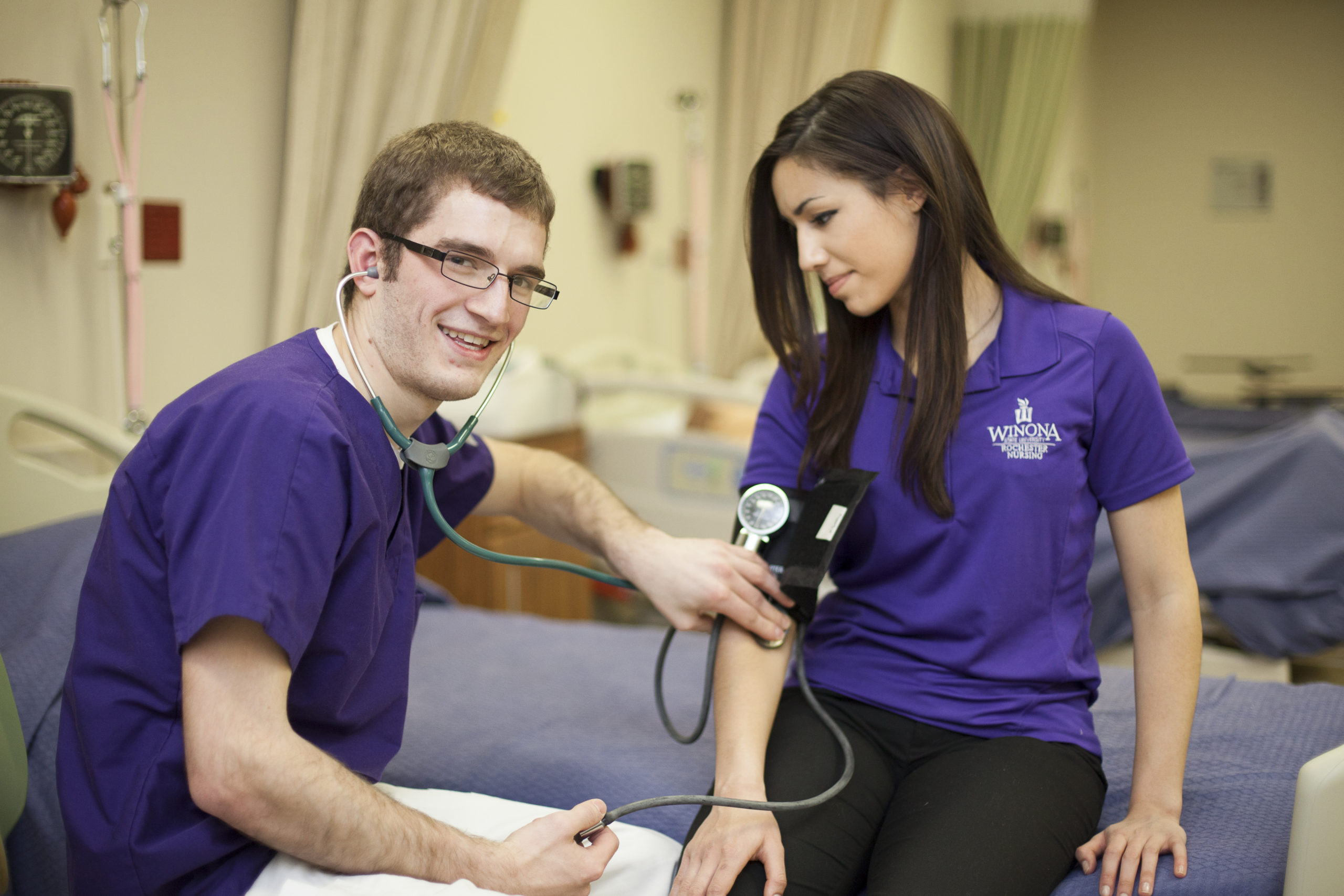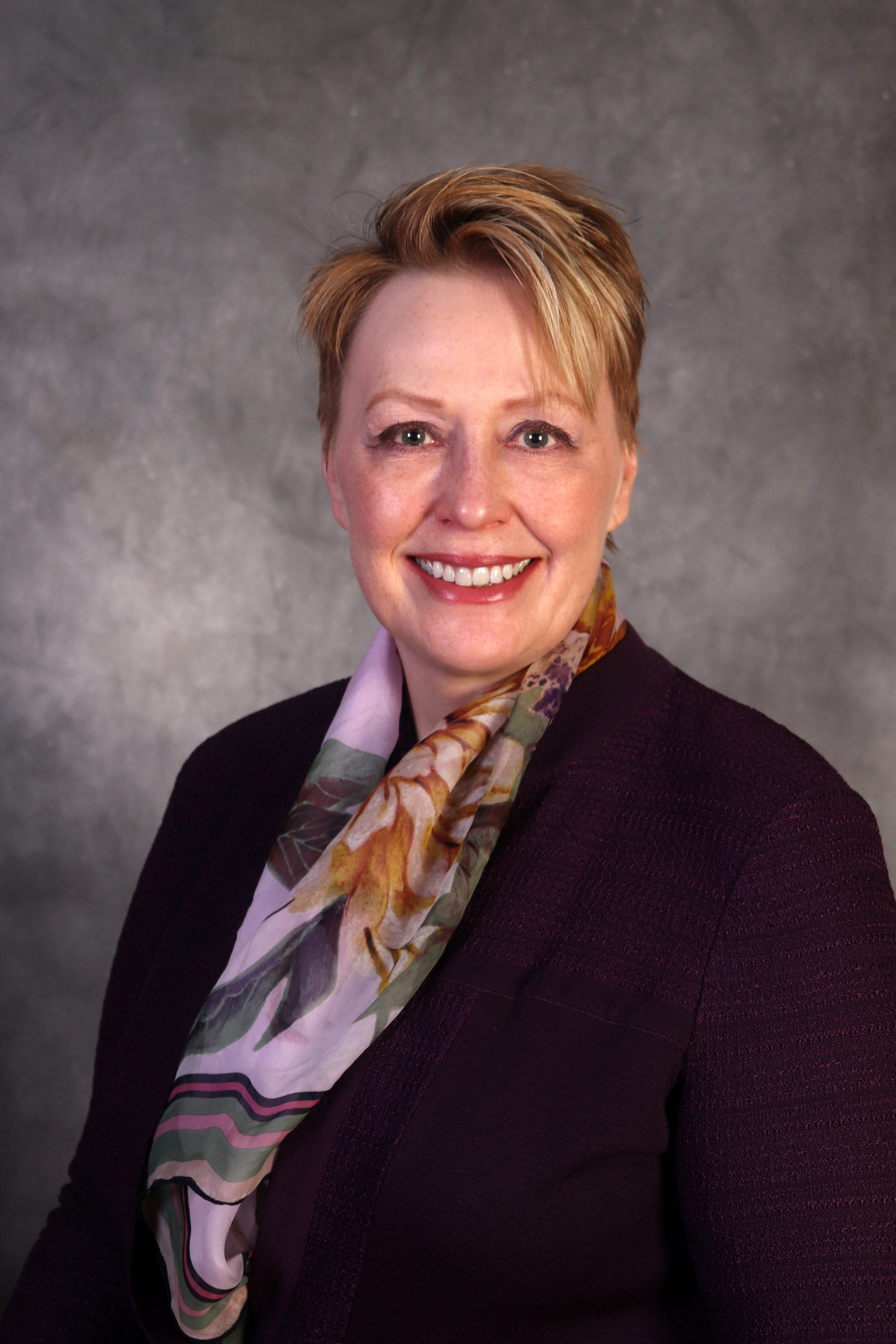
Nursing students at WSU-Rochester gain hands-on experience with classroom simulations. The Rochester Community Simulation Collaboration is working to expand shared lab space and boost simulation technology to help further educational opportunities for healthcare students and professionals.
Winona State University was recently recognized for its role in leading the new Community Simulation Collaborative in Rochester, MN. WSU joined with community partners HealthForce Minnesota and the Greater Rochester Advocates for Universities and Colleges (GRAUC) to receive the Innovative Partnering and Collaboration Award from the Minnesota State Division of Academic and Student Affairs. The award was presented at a virtual ceremony held on October 13, 2021. This award was created by Minnesota State to celebrate community service collaborations that reflect the changing nature of education and that incorporate new technologies, provide creative approaches to critical workforce needs, and focus on preparing under-represented students for success in higher education.

Dr. Jeanine Gangeness, Vice-President of Academic Affairs for Rochester and Dean of Graduate Studies
WSU and other members of GRAUC formed the Community Simulation Collaboration in 2020 to address the need for expanding Sim Lab space and resources in Rochester. A Sim Lab is a dedicated space set up to provide realistic simulations of a wide variety of medical procedures providing immersive learning experiences for healthcare students and professionals. “Simulation is a great way to expand quality education experiences for our students,” says Dr. Jeanine Gangeness, Vice-President of Academic Affairs for Rochester and Dean of Graduate Studies.
Winona State University will continue to help advance all aspects of the Community Simulation Collaborative’s mission under the leadership of Dr. Gangeness. The process is being led by Elaine Vandenburgh, Director of Healthcare Education and Industry Partnerships for HealthForce Minnesota. The collaboration also includes representatives from GRAUC, Rochester Community and Technical College, Saint Mary’s University, University of MN—Rochester, Mayo Clinic, Olmsted Medical Center, Hawthorne Education Center, Southeast Service Cooperative, Destination Medical Center, and HGA Architects.
This collaboration is funded by a Local Partnership Program Grant from Minnesota State. The grant funds are being used to explore current simulation lab capacity in Rochester, to determine the unmet needs of students and incumbent healthcare employees, to coordinate and document expanded usage, and to research the future of Sim technology. Members of the collaboration are working to expand access to relevant, effective, and flexible simulation technology for students and current healthcare workers with the goal of meeting local workforce needs.
Dr. Jeanine Gangeness is grateful that this award highlights the importance of this community collaboration and the need for improved simulation space and resources in Rochester. “Expanding the healthcare workforce in Rochester requires shared simulation laboratory spaces,” say says. “This new community asset will support education and healthcare to maintain and grow the world-class Rochester healthcare workforce.”
“It has been a pleasure to help lead the Community Simulation Collaborative,” says Julie Nigon, Executive Director of GRAUC. “Members of our group represent local post-secondary and K-12 schools, healthcare institutions, and economic development organizations. Under the leadership of GRAUC, these experts are working together to combine their considerable skills for the greater good. We are working toward a shared goal of designing and implementing a simulation center that will benefit healthcare workers and students in Rochester, which will ultimately benefit the entire regional and state economies.”
